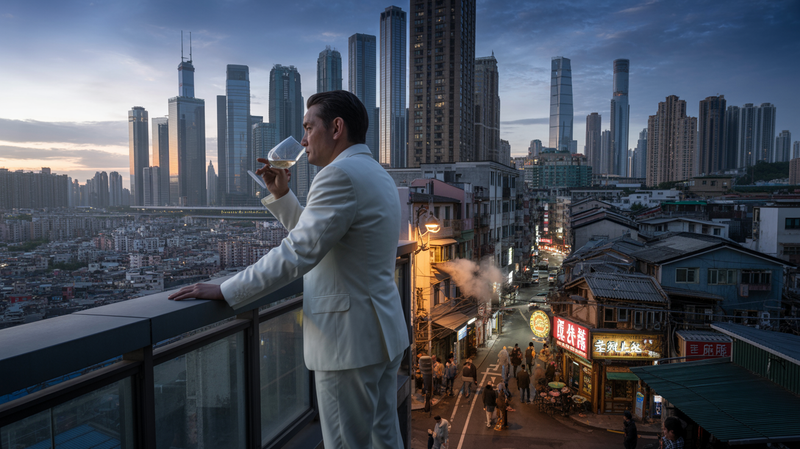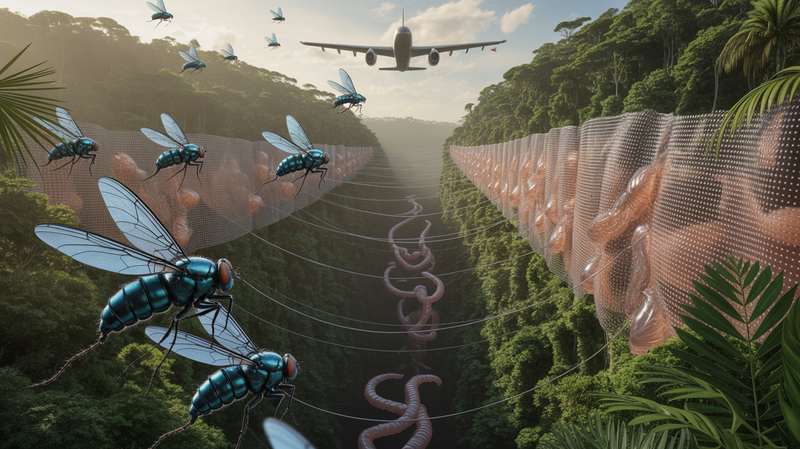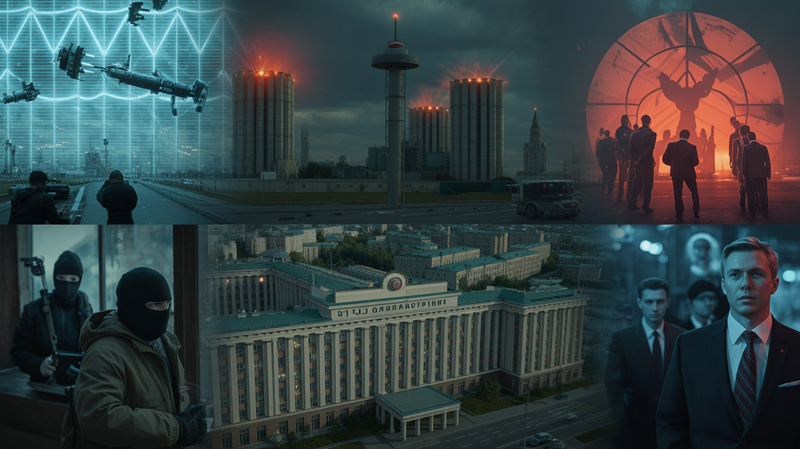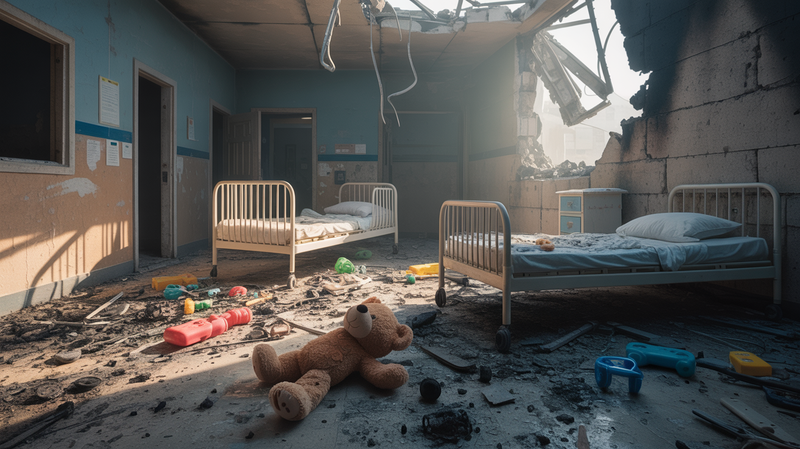The Doomsday Clock's Warning: A Historical Perspective
The Doomsday Clock, since its inception in 1947, has stood as a symbol of humanity's proximity to self-annihilation, primarily due to nuclear threats. Created by the scientists who participated in the Manhattan Project, the Clock initially reflected the post-World War II nuclear arms race between the United States
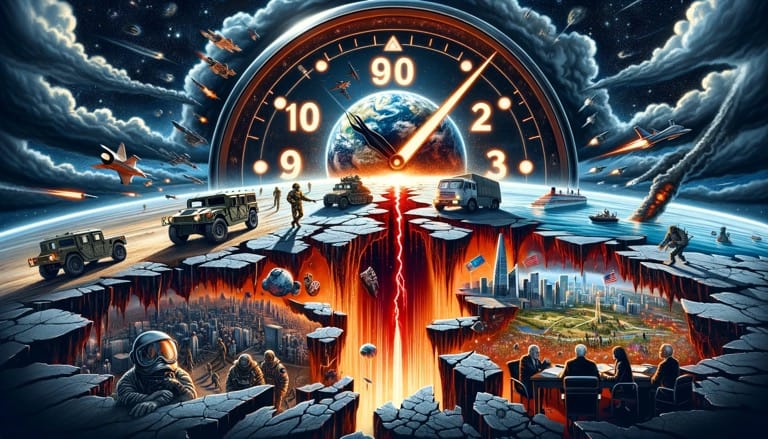
The Doomsday Clock, since its inception in 1947, has stood as a symbol of humanity's proximity to self-annihilation, primarily due to nuclear threats. Created by the scientists who participated in the Manhattan Project, the Clock initially reflected the post-World War II nuclear arms race between the United States and the Soviet Union. Over the years, the Clock's scope has broadened to include other existential threats to humanity, such as climate change and emerging technologies like artificial intelligence.
Initially set at seven minutes to midnight, the Clock's time has changed 24 times. It reached its safest point, 17 minutes to midnight, in 1991, following the signing of the Strategic Arms Reduction Treaty and the dissolution of the Soviet Union. Each change in the Clock's setting has been a response to world events and scientific advancements that affect the likelihood of a global catastrophe.
The recent setting at 90 seconds to midnight, the closest to the symbolic apocalypse, is not an arbitrary decision. It reflects the Bulletin of the Atomic Scientists' grave concern over several converging factors. The escalation of the climate crisis, marked by extreme weather events and failures in addressing global warming, poses a significant long-term threat to human civilization. The rapid development and potential misuse of artificial intelligence in military applications add a new dimension of risk, including the possibility of lethal autonomous weapons.
Perhaps most worryingly, nuclear rhetoric and the threat of nuclear conflict have returned to levels not seen since the height of the Cold War. The decision to move the Clock's hands closer to midnight also reflects the breakdown of international cooperation and treaties aimed at controlling nuclear weapons, exacerbating the risk of an accidental or intentional nuclear exchange.
The Doomsday Clock serves as a powerful symbol of the urgent need for renewed international dialogue and action to address these threats. It is a call for humanity to wake up to the dangers we face and to work together to pull back from the brink of disaster.
Current Global Hotspots: Analyzing the Tensions and Conflicts
The current setting of the Doomsday Clock at 90 seconds to midnight is in part a reflection of various global hotspots that pose significant threats to world peace and stability. Each of these flashpoints contributes uniquely to the heightened sense of global peril.
- Russia-Ukraine Conflict: The ongoing war between Russia and Ukraine has reignited fears of a wider European conflict, with potential global repercussions. The use of, or threat to use, nuclear weapons in this conflict has brought nuclear war back into the realm of possibility, a scenario thought to have been left behind with the Cold War.
- U.S.-China Tensions: The relationship between the United States and China is arguably the most significant bilateral relationship in the world today. Tensions over trade, technology, human rights, and territorial disputes in the South China Sea have increased the risk of a military confrontation, either through miscalculation or escalation.
- North Korea's Nuclear Ambitions: North Korea's continued development of its nuclear and ballistic missile programs poses a direct threat to regional stability in East Asia. The regime's unpredictable nature and isolation exacerbate the risks of miscalculation and conflict.
- Nuclear Developments in Iran, Pakistan, and India: Iran's continued uranium enrichment and stalling tactics with international agencies raise fears of a nuclear-armed Iran. Meanwhile, the longstanding rivalry between nuclear-armed neighbors Pakistan and India remains a constant source of tension and potential nuclear conflict in South Asia.
- Global Terrorism and Cybersecurity Threats: Non-state actors and terrorist groups, with their potential to access nuclear materials or launch cyber-attacks, add another layer of risk to global security. The increasing sophistication of cyber threats, including those from state actors, poses risks to critical infrastructure and could lead to unintended escalations in conflicts.
The Role of Artificial Intelligence in Global Security
The rapid development and integration of Artificial Intelligence (AI) into various sectors have raised new concerns about its potential impact on global security. The Bulletin of the Atomic Scientists emphasizes AI as a significant factor in the recent adjustment of the Doomsday Clock, reflecting the dual nature of AI as both a promising and a perilous technology.
- AI in Military Applications: One of the most immediate concerns is the use of AI in military contexts. AI-driven systems are increasingly being developed for surveillance, reconnaissance, and even direct combat roles. The prospect of lethal autonomous weapons, capable of selecting and engaging targets without human intervention, raises profound ethical and strategic questions. Such systems could lead to a new arms race and lower the threshold for conflict initiation, given their speed and efficiency compared to human decision-making.
- AI and Cyber Warfare: AI's role in cyber warfare is another area of concern. As AI algorithms become more sophisticated, they can be used to conduct complex cyber-attacks on critical infrastructure, manipulate information and public opinion, and engage in espionage. The attribution of such attacks can be challenging, leading to difficulties in retaliation and escalation management.
- Ethical and Legal Implications: The rapid advancement of AI technologies outpaces the development of corresponding ethical guidelines and legal frameworks. Issues such as accountability for AI-driven decisions, particularly in life-and-death situations, and the potential biases inherent in AI algorithms, need urgent attention from the global community.
- AI and Disinformation: AI also plays a role in the spread of disinformation, with the ability to create realistic fake audio and video content, known as deepfakes. This capability can be exploited to undermine political processes, incite violence, and destabilize societies.
The Implications of Nuclear Proliferation: A Ticking Time Bomb
Nuclear proliferation remains one of the gravest threats to global security, contributing significantly to the Doomsday Clock's alarming position. The spread and modernization of nuclear weapons pose complex challenges that require a nuanced understanding and a concerted international response.
- The Historical Context of Nuclear Proliferation: A brief historical overview of nuclear proliferation provides context. From the post-World War II arms race to contemporary concerns, nuclear weapons have long been central to global power dynamics. Past crises, such as the Cuban Missile Crisis, offer lessons on the brinkmanship and risks inherent in nuclear armament.
- Current Nuclear Threats: Several countries continue to enhance their nuclear capabilities, often in defiance of international norms. North Korea's ongoing nuclear program, Iran's uranium enrichment, and the nuclear arms race between India and Pakistan are significant concerns. These developments not only pose regional threats but also risk sparking a broader arms race.
- The Role of International Agreements and Oversight: The efficacy of international treaties and organizations, such as the Non-Proliferation Treaty (NPT) and the International Atomic Energy Agency (IAEA), is crucial in curtailing nuclear proliferation. Their successes and challenges in enforcing compliance and promoting nuclear disarmament are key to understanding the current landscape.
- Risks of Nuclear Terrorism: The potential for non-state actors to acquire nuclear materials adds another layer of risk. Efforts to secure nuclear materials and prevent their fall into the wrong hands are critical components of the global non-proliferation strategy.
- The Importance of Diplomacy and Dialogue: Diplomatic efforts to resolve nuclear disputes, such as negotiations with Iran and engagement with North Korea, play a vital role. The complexities of these diplomatic endeavors, including the role of sanctions and incentives, are important for comprehensive peace and security strategies.
Calls to Action and the Road Ahead: Mobilizing for Global Security
In light of the Doomsday Clock being set at a historically unprecedented 90 seconds to midnight, the Bulletin of the Atomic Scientists urges immediate and decisive action from global leaders, institutions, and citizens. This section elaborates on the specific actions and strategies necessary to address the multifaceted threats contributing to the current dire prognosis.
- Reducing Nuclear Arsenals and Risks: A renewed commitment to nuclear disarmament and arms control is critical. This includes revitalizing existing treaties like the New START and pursuing new agreements to limit and reduce nuclear stockpiles. Efforts to secure nuclear materials and prevent their proliferation, especially to non-state actors, are equally vital.
- Addressing Climate Change: The global community must accelerate efforts to combat climate change. This includes adhering to and going beyond the commitments of the Paris Agreement, investing in renewable energy technologies, and implementing policies that promote sustainability and resilience.
- Regulating and Ethically Guiding AI Development: Establishing international norms and regulations for AI, especially regarding its military use, is urgent. Collaborative efforts to set ethical guidelines and maintain human oversight over AI systems can mitigate potential risks.
- Enhancing Cybersecurity: Strengthening defenses against cyber threats, particularly those targeting critical infrastructure and democratic institutions, is essential. This includes international cooperation to combat cybercrime and the development of norms for state behavior in cyberspace.
- Strengthening Diplomatic Efforts: Diplomacy remains key in resolving geopolitical tensions and conflicts. Engagement, dialogue, and negotiation are vital tools in addressing issues like the Russia-Ukraine conflict, U.S.-China relations, and the nuclear ambitions of countries like North Korea and Iran.
- Fostering Global Cooperation: Beyond governmental action, there is a need for collaboration among international organizations, civil society, academia, and the private sector. Public awareness and grassroots movements also play a crucial role in advocating for policies and actions that contribute to global security.
Conclusion: Heeding the Midnight Call – A Unified Path Forward
The setting of the Doomsday Clock at 90 seconds to midnight is more than a symbolic gesture; it is a clarion call to the world. It reflects the urgent need for collective action to address the array of threats that endanger our planet and our existence. This final section of the article seeks to encapsulate the gravity of the situation and the critical need for a unified response.
The Doomsday Clock's proximity to midnight serves as a stark reminder of the interconnected nature of global challenges. Nuclear proliferation, climate change, emerging technologies like artificial intelligence, and cybersecurity threats do not exist in isolation. They are compounded by geopolitical tensions and the erosion of international norms and agreements that have historically helped manage such risks.
In the face of these daunting challenges, it's easy to succumb to fatalism. However, the history of the Doomsday Clock and the world it reflects is also a history of human resilience and ingenuity. There have been moments when the world stood on the brink, only to pull back through concerted diplomatic efforts, scientific innovation, and public advocacy.
The current setting of the Clock is not a foregone conclusion of doom but a call to action. It's a reminder that the future is not predestined but shaped by the decisions and actions taken today. It underscores the need for renewed commitment to international cooperation, the responsible stewardship of emerging technologies, and the pursuit of sustainable and equitable solutions to our most pressing global issues.
As the world faces these unprecedented challenges, the role of each individual, community, and nation becomes ever more critical. The Doomsday Clock serves as a reminder that time is a luxury we no longer possess. The global community must come together, transcending borders and differences, to forge a path toward a safer, more stable world. In this effort, every second counts, and every action matters. This is our midnight call – a call for unity, action, and hope.

